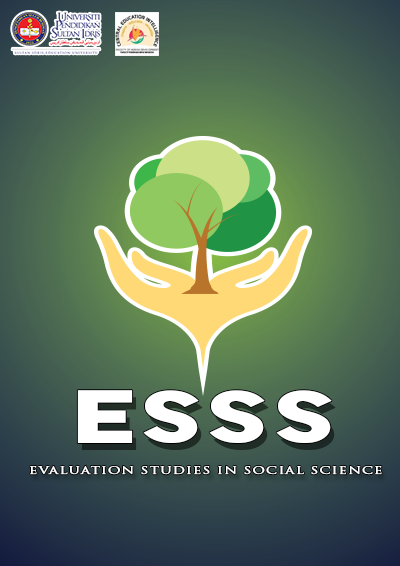Residents’ Perceptions of Heritage Tourism Development Based on Sustainable Tourism Indicators in Central Malacca
Persepsi Penduduk terhadap Pembangunan Pelancongan Warisan Berasaskan Petunjuk Pelancongan Lestari di Melaka Tengah
DOI:
https://doi.org/10.37134/esss.vol2.2.1.2021Keywords:
Tourism development, development impact, sustainability, heritage tourismAbstract
This studies aims to identify the level of knowledge of the residents, the perception of the residents on changes in tourism development and the perception of the residents on the impact of tourism development on the sustainability of heritage tourism by referring to the Sustainable Tourism Guidelines in Central Melaka which covers Bandar Melaka. A total of 382 residents living around Central Melaka were selected as study respondents. Data were collected using a simple random sampling method through a questionnaire form and analyzed using descriptive statistics. Overall, the level of knowledge of local people about heritage tourism development in Central Melaka is high (M = 3.92, SP = 0.37), the level of change in heritage tourism development is high (M = 3.67, SP = 0.26) while the impact of tourism development on the sustainability of heritage tourism was also at a high level (M = 4.07, SP = 0.17). In conclusion, changes in tourism development affect the sustainability of heritage tourism in Central Melaka. The implications of this study can be used as a guideline for the Melaka State Government and Local Authorities in planning the development of sustainable heritage tourism based on the Sustainable Tourism Guidelines.
Downloads
References
Abas, Azlan, Azahan Awang, & Jamaluddin Md Saad. (2017). Impak bilangan kenderaan terhadap pencemaran bunyi di Banda Hilir, Melaka. Geografia-Malaysian Journal of Society and Space, 13(4).
Ang, K. H. (2015). Melaka sebagai pusat pelancongan dunia: dapatkah dipertahankan? Geografia-Malaysian Journal of Society and Space, 11(9), 75-85.
Ang, K. H. (2016). Sungai Melaka sebagai suatu daya tarikan pelancongan baru di Negeri Melaka: satu ulasan kritis. Geografia-Malaysian Journal of Society and Space, 12(1), 108-117.
Azlina Awang & Munira Ismail. (2011). Destinasi pelancongan global. Logareadthem Publications.
Azlina Awang & Munira Ismail. (2011). Pembangunan Malaysia Menuju 2020 (Siri I) ke Arah Pendidikan Kelas Pertama. Logareadthem Publications.
Baharuddin Mohamed & Nikmatul Adha Nordin. (2007). Perancangan Pelancongan (National government publication ed.). Dewan Bahasa dan Pustaka.
Butler, R.W. (1980). The concept of a tourist area-cycle of evolution: implications for management of resources. Canadian Geographer, 24, 5-12.
Enea, C., & Tanasoiu, G. L. (2009). The impact of tourism in enhancing the quality of life. Review of International Comparative Management, (2), 347-351.
Dymond, S. J. (1997). Indicators of sustainable tourism in New Zealand: a local government perspective. Journal of Sustainable Tourism, 5(4), 279-293.
Jabatan Perangkaan Melaka. (2018). Bilangan Penduduk Negeri Melaka. Pejabat Jabatan Perangkaan Melaka, Bandar Hilir, Melaka, Malaysia.
Krejcie, R. V., & Morgan, D. W. (1970, September 1). Determining Sample Size for Research Activities. Educational and Psychological Measurement, 30(3), 607-610.
Mohamad Zaki Ahmad, Johan Afendi Ibrahim, Norria Zakaria, & Malike Brahim. (2018, oktober 29-30). Kelangsungan sumberjaya pelancongan negara melalui penerapan konsep pelancongan lestari: aspek untuk pertimbangan. In Persidangan Kebangsaan ''Governance dan Development.
Nurfashihah Omar & Indera Syahrul Mat Radzuan. (2021). Kesan-kesan pewartaan Melaka Bandaraya Bersejarah Sebagai Tapak Warisan Dunia oleh UNESCO. Research in Management of Technology and Business, 2(1).
Rahimah Wahid. (2019). Sustainability in the environmental impact assessment and ecological inputs for quarry activities in Melaka Tengah, Melaka. International Journal of Academic Research in Business and Social Sciences, 9(1).
Uma Sekaran. (1992). Research methods for business: a skill-building approach (2nd Ed.). Wiley.
Siti Norsakira Mohamed & Rosniza Aznie Che Rose. (2018). Potensi bandar Kuala Lipis sebagai destinasi pelancongan warisan. Geografia-Malaysian Journal of Society and Space, 14(1), 102-115.
Siti Salina Masdey & Zuliskandar Ramli. (2018, June). Potensi pembangunan pelancongan berasaskan warisan di Bandar Hilir, Melaka: analisis swot. Asian Journal of Environment, History and Heritage, 2(1), 253-265.
Sudarmo, S. N., Sarimah Ahmad, Noor Azlin Mohd Kasim, Norly Marlia Kamaruddin, & Muhammad Nasirin Abu Bakar. (2020). Persepsi pengusaha inap desa terhadap pembangunan inap desa di negeri Melaka. Journal of Hospitality and Networks, 1(1).
Tisdell, C. (1987, March). Tourism, the Environment and Profit. Economic Analysis and Policy, 17(1), 13-30.
TourismMelaka. (2017). Retrieved March 15, 2020, from https://tourismmelaka.com/
Yahaya Ibrahim. (2008). Pelancongan Malaysia: pembangunan dan pemerkasaan. In Yahaya Ibrahim, Sulong Mohamad, & Habibah Ahmad (Eds.), Pelancongan Malaysia isu pembangunan, budaya, komuniti, dan persetempatan (pp. 11-26). Penerbit Universiti Utara Malaysia.
Yazid Saleh. (2010). Survival warisan budaya dalam sektor pelancongan: kajian kes di Melaka. In Yazid Saleh, Fauziah Che Leh, & Mazdi Marzuki (Eds.), Isu-isu semasa alam sekitar manusia di Malaysia. Penerbit Universiti Pendidikan Sultan Idris.
Zaipul Anwar Zainu. (2019, December). Development of Policy and Regulations for Hazardous Waste Management in Malaysia. Journal of Science, Technology and Innovation Policy, 5(2).





